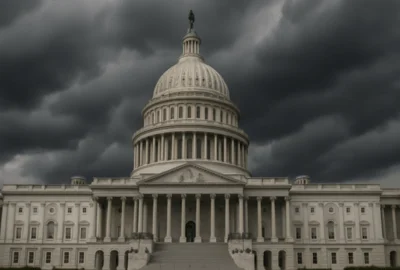The Heritage Foundation's Project 2025 is a comprehensive plan outlining how a far-right presidential administration could potentially reshape the U.S. government. The project comprises four main components: a 920-page book with policy proposals, a personnel database of loyalists ready to replace civil servants, a private online training center, and an unpublished plan for the first 180 days of a new administration.
The proposals within Project 2025 are extensive and controversial. They include measures such as increasing taxes on the middle class, allowing corporations to avoid paying overtime, implementing a national abortion ban, and raising the retirement age for Social Security. These policies have been described as unpopular.
A key aspect of Project 2025 is its strategy to alter the system of checks and balances that has traditionally protected Americans' freedoms. The plan aims to concentrate power in the presidency by replacing civil servants with political loyalists and diminishing the independence of public agencies. This strategy is seen as an effort to consolidate power in an authoritarian manner.
The Center for American Progress has analyzed specific proposals from Project 2025, which include raising prescription drug costs, restricting access to contraception, cutting funding for education, ending civil rights protections, reducing environmental safeguards, and opening pathways for potential corruption.
The public agenda of Project 2025 can be divided into three core areas:
1. Gutting the U.S. system of checks and balances.
2. Removing fundamental personal freedoms.
3. Increasing costs on the middle class while benefiting the wealthy.
Project 2025 proposes reclassifying tens of thousands of civil servants as political appointees, stripping them of labor protections and enabling their replacement with loyalists. It also seeks to end the independence of agencies like the FBI and Department of Justice, potentially placing individuals above the law based on wealth or influence.
Further elements involve using federal resources to investigate political opponents and eliminating agency independence that protects consumers and ensures fair competition in business practices. Notably, it includes using health agencies for surveillance purposes related to reproductive freedom.
In addition to consolidating power in government institutions, Project 2025 would impose nationwide bans on abortion and contraception, curtail LGBTQ rights, increase corporate control over workers, and redefine personal autonomy in America.
Economic policies proposed under Project 2025 would raise costs for the middle class while providing significant tax cuts for corporations and wealthy individuals. This includes stopping overtime pay requirements for companies and raising taxes on working families.
The article concludes by questioning whether such sweeping changes could occur in America. It references historical instances where judicial decisions have significantly altered established precedents affecting millions of Americans' rights.





